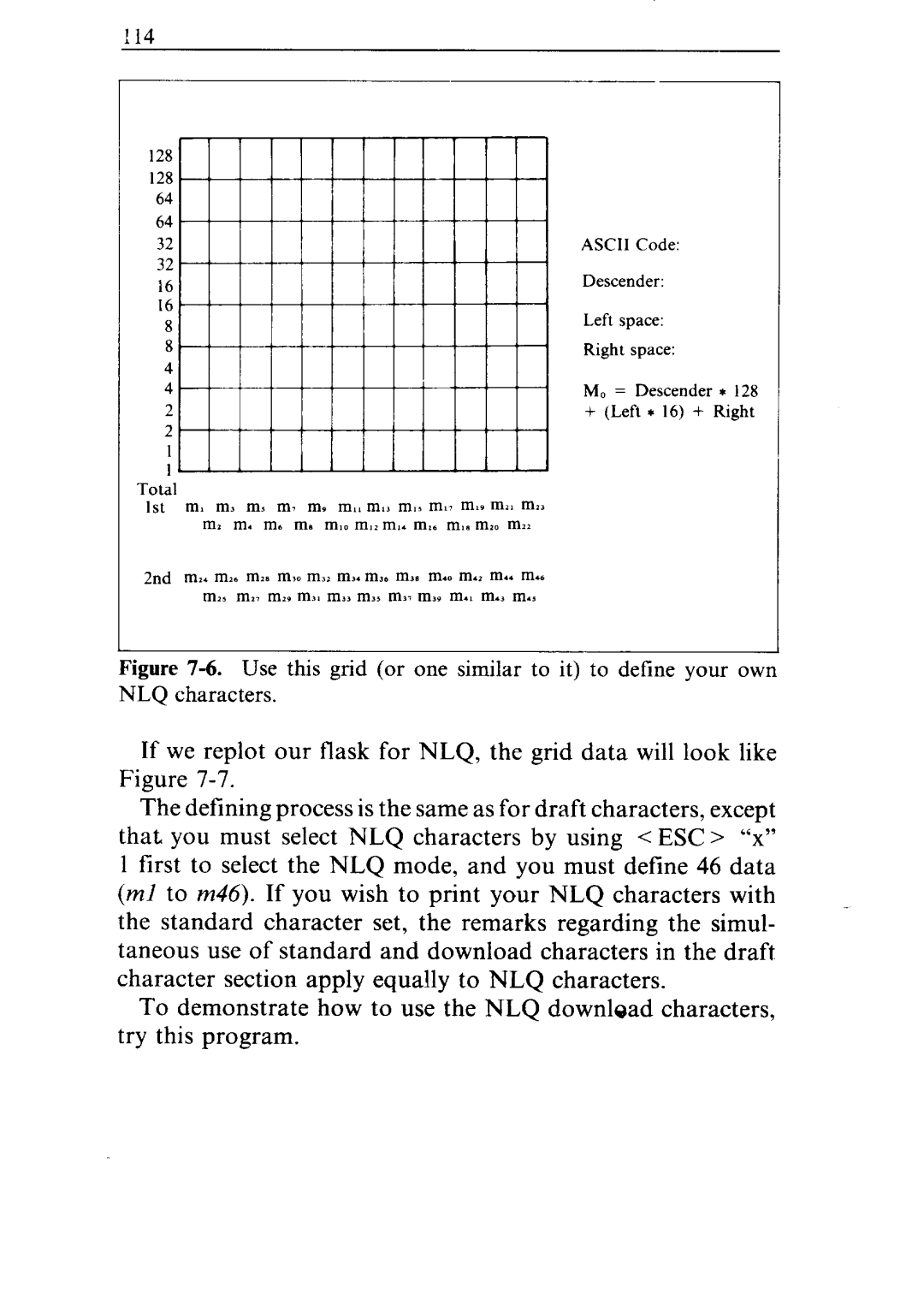
128 |
|
|
|
|
|
|
|
|
|
64 |
|
|
|
|
|
|
|
|
|
64 |
|
|
|
|
|
|
|
|
|
32 |
|
|
|
|
|
| ASCII | Code: |
|
32 |
|
|
|
|
|
| Descender: |
| |
16 |
|
|
|
|
|
|
| ||
|
|
|
|
|
|
|
|
| |
16 |
|
|
|
|
|
| Left space: |
| |
8 |
|
|
|
|
|
|
| ||
|
|
|
|
|
|
|
|
| |
8 |
|
|
|
|
|
| Right | space: |
|
4 |
|
|
|
|
|
|
|
|
|
4 |
|
|
|
|
|
| MO = | Descender | * 128 |
2 |
|
|
|
|
|
| + (Left * 16) + | Right | |
2 |
|
|
|
|
|
|
|
|
|
1 |
|
|
|
|
|
|
|
|
|
1 |
|
|
|
|
|
|
|
|
|
Total |
|
|
|
|
|
|
|
|
|
1st | m, | m, | m, | m7 m, m,, m,, | m,. | ml7 rn,, rn,, | ma, |
|
|
|
| rn, m. m. me rn,, m,, m,. m,, m,. m,, rn,, |
|
| |||||
2nd | m,. | rn,, | m,. | m,, rn,* m,, m,. | m,, | m.O m., m.. | m.. |
|
|
|
| rn,, m,, m,, m,, m,, m,, rn3, m,, m., m., m., |
|
| |||||
Figure 7-6. Use this grid (or one similar to it) to define your own
NLQ characters.
If we replot our flask for NLQ, the grid data will look like Figure
The defining process is the same as for draft characters, except that you must select NLQ characters by using < ESC > “x” 1 Grst to select the NLQ mode, and you must define 46 data (ml to ~246). If you wish to print your NLQ characters with the standard character set, the remarks regarding the simul- taneous use of standard and download characters in the draft character section apply equally to NLQ characters.
To demonstrate how to use the NLQ downlead characters, try this program.
